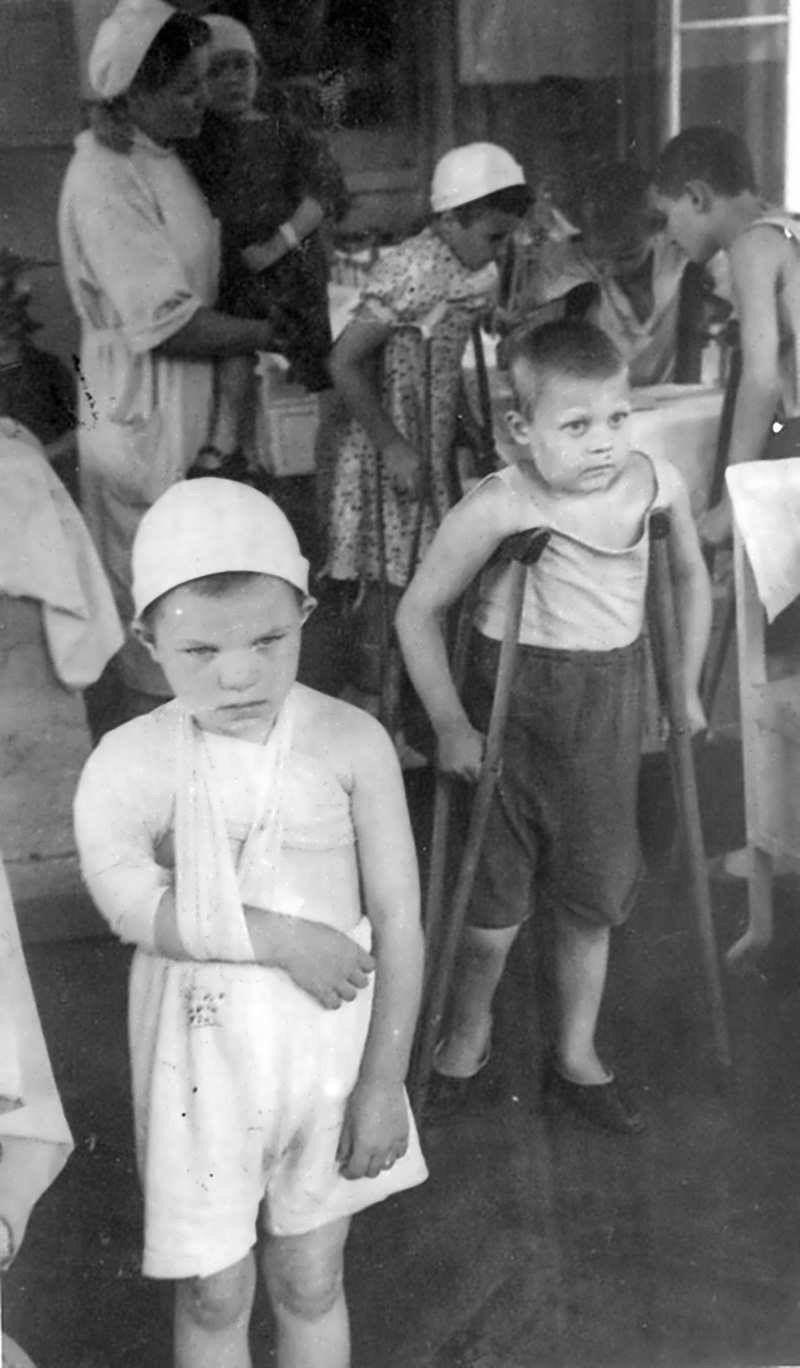
Seige of Leningrad: Casualties (1941-44)

Figure 1.--The Germans shelled and bombed Lennigrad for nearly 3 years, killing less than 6,000 civilians. In World War II terms it was an ibcedably small number killed given the enormous quantity of ordinasnce inleashed on the city. Here are some of the children injured being treated in a Lenningrad hospital. Tragically some 632,000- people died in the cityy. The real killer in Lenningrad was starvation. There was not enough food to feed a large civilisn population and Stalin refused to cintenace an evacuatioin as the Germans closed in on the city.
|
|
The Germans launched Basrbsarossa (June 22, 1941). Army Group North swept through the Baltics toward Lenningrad. The first German artillery shell fell on Leningrad (September 1). Hitler decided not to storm the city. Not only would it result in enormous caualties (as was proven in Stalingrad), but once taken the Germans would have to feed the population. And par of the pursose of Barbarossa was to destroy the Slavic populsation of the East. There was a murder plan--Generalplan Ost developed by the SS. A seige would result in massive civilian casualties, meaning the Germans would be spared the need to kill the population. Hitler assured his generals that once Leningrad had been surrounded and bombarded from the air and by artillery on the ground, the resolve of the city to continue the fight disolve. German bombers dropped propaganda leaflets on the city – warning that the city would starve to death if they did not surrender. The Panzers were just 10 miles from Leningrad (September 8). TYhis began the seige, vutting off Leningrad. Land connections with the rest of the Soviet were open off and on for a few months as fighting raged 100 miles to the east at the Tikhvin rail center. Stalin did not, however, rush supplies into the city. His focus was on Moscow. The Germans punded Leningrad with both artillery and aerial bombardment. This went on for 900 days. Destoying a city, however, proved more difficult thn anticipated. It consumed a huge quntity of ordinance for little military gain. Again as in the Blitz on London, Hitler was expending limited military resources on destroying a city and its people. And the Wehrmacht had to deoloy substantial forces outside the city while the War was being decided elsewhere in the East, first around Moscow and then in the south, Stalingradand the Ukraine. Wars are not won by killing civilians. The people of Leningrad suffered teriibly.
The Germans launched a major air assault, the heaviest on the city (Sepotember 19). Some 276 German bombers attacked Leningrad killing 1,000 civilians. Many of those killed were soldiers in hispitls recuperating from battle wounds. The Germans came in six waves. Five hospitals were damaged in the bombing, as well as the city's largest shopping bazaar. Hundreds of civiland had run from the street into the substantial store to take shelter.
While this was the best the Luftwaffe could do, 276 bombers was only a fraction of the bombers the Allies would throw at the Germans on a daily bassis by 1943, shoiwing what the Germans had gotten themselves into. And after September, the Luftwaffe woukd never again mount such a large attack. They did cintinue small-scale attacks.
Artillery bombardment of Leningrad began (September 1, 1941). And unlike the aerial bombsrdmenyt, it increased in intensity when heavy German guns arrived (1942). The shelling further intensifuied (1943). Several times as many shells and bombs were used as were used in 1942. Even so there was a declining impact. Many shells hit already destroyed buildings.
The Soviets report German shelling and bombing killed 5,723 and wounded 20,507 civilians. This actually was a rather small number given the ordinance expended. Tthe real killer was from strarvastion. Leningrad was desperately short of both food anbd fuel. The combination was deadly. Without heated aoarnments food was needed to survive the cold. Food that that Leningaders did not have. Soviet authorities report that nearly 4,000 people from Leningrad starved to death just on Christmas Day, 1941.
Stalin refused to evacute the people, even the children for some time. By the end of the siege, some 632,000 people in Leningrad died. .
CIH -- WW II

Navigate the CIH World War II Section:
[Return to Main Lenningrad seige page ]
[Return to Main Lenningrad page]
[Return to Main World War II campaign page]
[Biographies]
[Campaigns]
[Children]
[Countries]
[Deciding factors]
[Diplomacy]
[Geo-political crisis]
[Economics]
[Home front]
[Intelligence]
[POWs]
[Resistance]
[Race]
[Refugees]
[Technology]
[Bibliographies]
[Contributions]
[FAQs]
[Images]
[Links]
[Registration]
[Tools]
[Return to Main World War II page]
[Return to Main war essay page]
Created: 8:51 AM 4/28/2018
Last updated: 8:51 AM 4/28/2018



